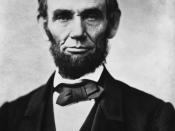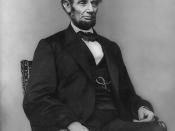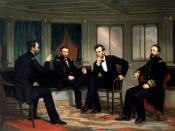The Events Leading Up to the Civil War
Conflicts widened between the North and the South as two sides collided in every event before the Civil War. The North and the South were very different in many ways. They were known as two different countries because of their cultural and economic differences. The disagreements between the North and the South aggravated the separation that was soon to follow. When the North gained the control of the government, the South seceded.
The North was industrialized and had many factories. It also included railroad tracks of more than 20,000 miles. The railroad transferred settlers, manufactured goods, wheat, and raw materials. On the other hand, the South was very agricultural, consisted of many plantations and small farms. The North was far more advanced in the technological field. Because of its industrial environment, most immigrants settled in the North. As a result, the North's population grew much faster.
Only a small number of immigrants settled in the South because there were not enough jobs available due to slavery. These differences show that the North and the South were not united even before the Civil War.
Dred Scott vs. Sanford was a fight over a black slave who was taken to a free state by his owner. Dred Scott, who lived in a slave state Missouri, was taken to the free territory in Illinois and Wisconsin. Scott sued his owner for his freedom claiming that he lived in a free state, thus he had become a free man. The trial finally reached the Supreme Court. The Court ruled that being in free territory does not make a slave free. Dred Scott lost the case and was still considered a slave.
The race for the U.S. senate began between Democrat Stephen Douglas and Republican Abraham Lincoln.



John Brown stabbed then hung.
I heard from my history teacher that John Brown was stabbed by US Marines called in for the stand off he caused in the chest and then a few months later was tried for treason.
0 out of 0 people found this comment useful.